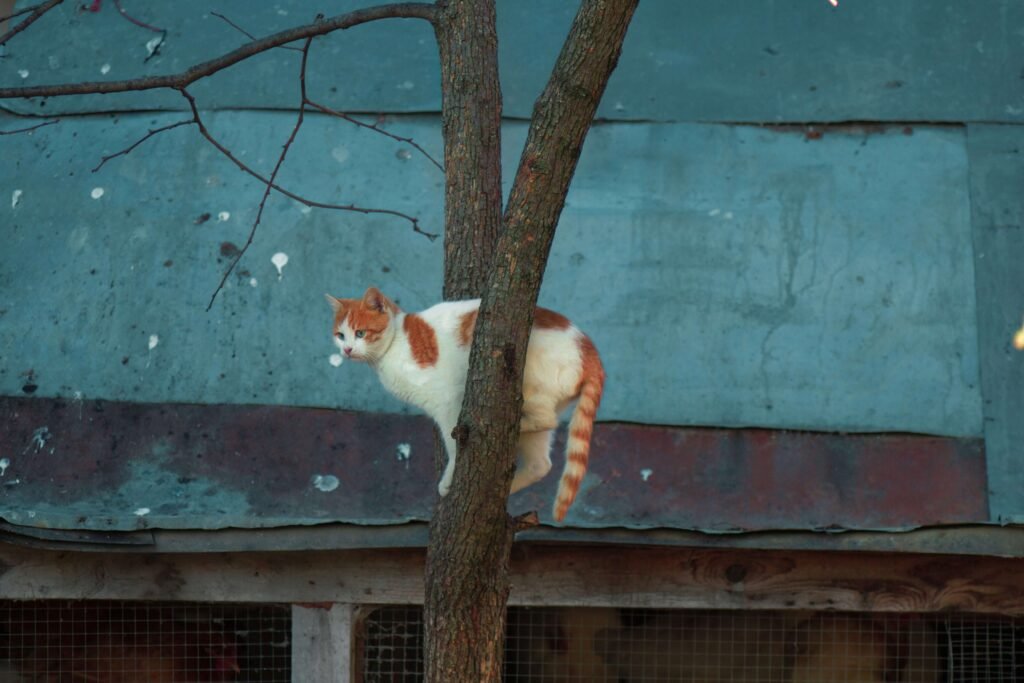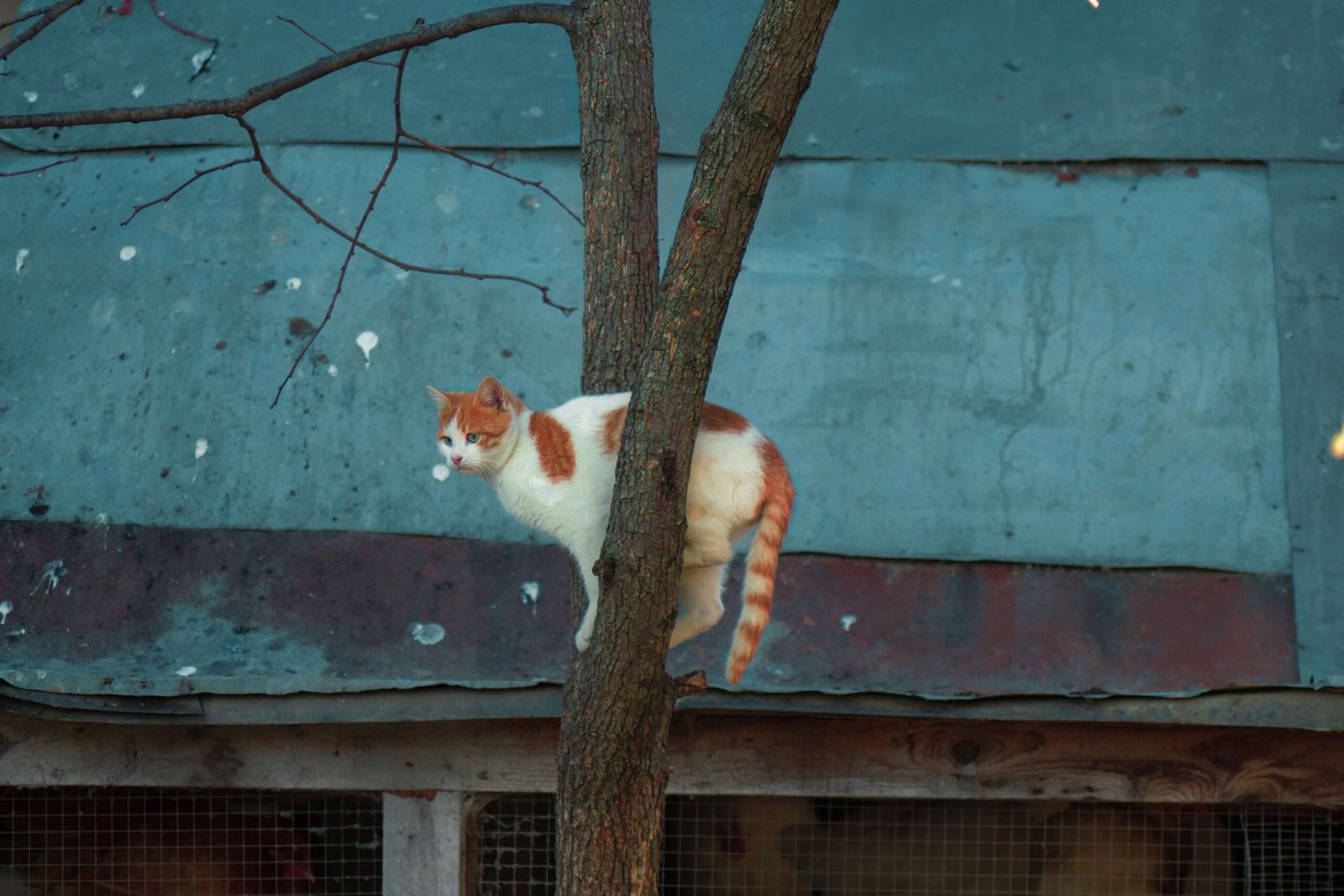What Do Stray Cats Eat? Understanding Their Diet and Survival Strategies
Stray cats are resilient creatures, often navigating harsh environments while managing to find sustenance. But what exactly do stray cats eat to survive? Unlike domesticated cats, strays rely on their instincts and resourcefulness to scavenge for food in urban, suburban, and rural settings. Their diet can vary widely depending on availability, location, and season. In this blog post, we’ll explore the types of food stray cats consume, how they adapt to their surroundings, and what you can do to help these independent felines thrive. Whether you’re curious about their natural habits or looking to support a local stray, this guide will provide valuable insights into the world of stray cats.
Common Foods Found in a Stray Cat’s Diet
Stray cats are opportunistic feeders, meaning they’ll eat whatever they can find to stay nourished. Their diet often includes a mix of natural prey, human leftovers, and scavenged items. Here’s a breakdown of what stray cats typically eat:
Small Animals
Stray cats are skilled hunters and often prey on small animals like mice, birds, and insects to meet their protein needs.Food Scraps from Trash
In urban areas, stray cats may rummage through garbage bins to find leftover human food, such as meat scraps or discarded snacks.Grass and Plants
While not a primary food source, stray cats sometimes nibble on grass or plants to aid digestion or alleviate stomach discomfort.Handouts from Humans
Kind-hearted individuals may offer stray cats food, such as canned cat food, dry kibble, or cooked chicken, providing a more balanced diet.Natural Water Sources
Stray cats depend on puddles, ponds, or dripping faucets for hydration, especially when clean water isn’t readily available.
The diversity in their diet highlights their adaptability, but it also underscores the challenges they face in finding consistent, nutritious meals.
Nutritional Needs of Stray Cats
While stray cats are resourceful, their diet often falls short of meeting their full nutritional requirements. Understanding their dietary needs can help us better support their health and well-being. Here’s what stray cats need to thrive:
High-Quality Protein
Cats are obligate carnivores, meaning their bodies require animal-based proteins to function properly. Without enough protein, their health can deteriorate quickly.Essential Fatty Acids
Fats like omega-3 and omega-6 are crucial for maintaining healthy skin, fur, and overall vitality. Stray cats may lack these nutrients if their diet is inconsistent.Hydration
Proper hydration is vital for kidney health, but stray cats often struggle to find clean water sources, leading to dehydration.Vitamins and Minerals
Nutrients like taurine, vitamin A, and calcium are essential for vision, immune function, and bone health. These are often lacking in a scavenged diet.Limited Carbohydrates
Unlike humans, cats don’t need large amounts of carbs. Excessive carbohydrates can lead to obesity or digestive issues.
By understanding these nutritional needs, we can take steps to ensure stray cats receive the care and sustenance they require to live healthier lives.
Check this guide 👉Name for Your Stray Cat: Best 7 Expert Tips!
Check this guide 👉When a Stray Cat Chooses You: Best 7 Expert Behavior Tips!

Healthy Food Options for Stray Cats | Unhealthy or Harmful Foods |
|---|---|
Cooked chicken (no seasoning) | Chocolate |
Canned tuna (in water, not oil) | Onions |
Dry cat kibble | Garlic |
Wet cat food | Alcohol |
Plain scrambled eggs | Grapes or raisins |
How to Safely Feed Stray Cats
If you encounter stray cats in your neighborhood, feeding them responsibly can make a big difference in their lives. However, it’s important to approach this task thoughtfully to avoid unintended consequences. Here are some tips for safely feeding stray cats:
Choose Nutritious Food
Opt for high-protein options like canned cat food or cooked meat to provide the nutrition they need.Avoid Seasonings or Spices
Never add salt, pepper, or other seasonings to the food, as these can be harmful to cats.Provide Fresh Water
Place a bowl of clean water near the food to ensure they stay hydrated.Feed in a Quiet, Safe Area
Choose a location away from traffic or predators where the cats can eat undisturbed.Clean Up Afterward
Remove any uneaten food to prevent attracting pests or creating unsanitary conditions.
By following these guidelines, you can help stray cats maintain their health while minimizing risks to the community.
Challenges Stray Cats Face in Finding Food
Survival is no easy feat for stray cats, as they face numerous challenges in securing a steady food supply. These obstacles can impact their health and longevity. Here’s a look at the difficulties they encounter:
Seasonal Scarcity
During colder months, prey animals may become scarce, leaving stray cats with fewer hunting opportunities.Competition with Other Animals
Stray cats often compete with other wildlife or even fellow strays for limited food resources.Human Neglect or Hostility
Some people may intentionally harm or drive away stray cats, cutting off potential food sources.Exposure to Contaminated Food
Eating spoiled or toxic food from trash can lead to illness or poisoning.Lack of Shelter Near Food
Without access to shelter, stray cats may struggle to protect themselves while eating or resting.
These challenges highlight the importance of community efforts to support stray cats and improve their quality of life.
Signs a Stray Cat May Be Hungry
If you’re unsure whether a stray cat is in need of food, there are several signs to look out for. These behaviors can indicate hunger or malnourishment, helping you determine when intervention may be necessary. Here’s what to watch for:
Persistent Meowing or Crying
Stray cats may vocalize more frequently when they’re hungry, especially if they’ve learned that humans provide food.Scavenging in Trash Bins
A cat rummaging through garbage is likely searching for something to eat, as natural food sources may be scarce.Lethargic Behavior
Hungry stray cats often appear less energetic and may spend more time resting to conserve energy.Visible Rib Cage or Spine
A severely underweight cat will have prominent bones, signaling a lack of proper nutrition over time.Following People Around
Some stray cats may approach humans or follow them, hoping to receive food or attention.
By recognizing these signs, you can identify stray cats in need and take steps to help them regain their strength and vitality.
Seasonal Challenges for Stray Cats’ Food Supply
The availability of food for stray cats can fluctuate significantly depending on the season. Understanding how different seasons impact their diet can help you anticipate their needs and offer timely support. Here’s a breakdown of seasonal challenges:
Winter Scarcity
During colder months, prey animals like rodents and birds may hibernate or become less active, leaving stray cats with fewer hunting opportunities.Spring Abundance
Spring often brings an increase in small prey due to breeding cycles, providing stray cats with more natural food options.Summer Heat
Extreme heat can spoil exposed food quickly, making it harder for stray cats to find safe meals in urban environments.Fall Foraging
As plants and crops mature, stray cats may nibble on fallen fruits or seeds, though these aren’t ideal nutrition sources.Weather-Related Barriers
Storms, heavy rain, or snow can disrupt access to both natural prey and human-provided food, leaving stray cats vulnerable.
By considering these seasonal factors, you can better plan how and when to assist stray cats during challenging times.
Ways to Encourage Community Involvement in Feeding Stray Cats
Supporting stray cats doesn’t have to be a solo effort. Engaging your community can amplify your impact and create a sustainable network of care. Here are some ways to encourage others to get involved:
Organize Donation Drives
Collect donations of cat food, water bowls, and other supplies from neighbors to distribute among stray cat colonies.Host Educational Workshops
Teach community members about stray cats’ dietary needs and safe feeding practices to ensure responsible care.Create a Feeding Schedule
Coordinate with volunteers to establish a rotating schedule for feeding stray cats, ensuring consistency and reducing burden on individuals.Set Up Sheltered Feeding Stations
Build or designate covered areas where food and water can be left safely, protecting it from weather and pests.Partner with Local Shelters
Collaborate with animal shelters or rescue groups to share resources and expertise in caring for stray cats.
By fostering community involvement, you can build a supportive environment where stray cats receive the care and compassion they deserve.
Frequently Asked Questions About What Stray Cats Eat
Can stray cats survive on dry food alone?
While dry food provides calories, it lacks sufficient moisture, which can lead to dehydration over time.
Is it safe to give stray cats milk?
No, most cats are lactose intolerant, and milk can upset their stomachs. Water is a better option.
How often should I feed stray cats?
Feeding once or twice daily is ideal, ensuring they have regular access to food without over-relying on handouts.
What should I do if a stray cat looks malnourished?
Offer nutrient-rich food and consider contacting a local animal rescue group for further assistance.
Can stray cats eat raw meat?
Yes, but it must be fresh and free from harmful bacteria. Cooked meat is a safer alternative.
Final Thoughts: Supporting Stray Cats Through Compassion and Care
Understanding what stray cats eat sheds light on their resilience and the challenges they face daily. By recognizing their dietary needs and taking steps to provide safe, nutritious food, we can make a meaningful difference in their lives. Whether through responsible feeding practices, community initiatives, or simply spreading awareness, every effort counts. Remember, stray cats are survivors, but they still benefit greatly from our kindness and support. Together, we can help these independent felines thrive while fostering a more compassionate environment for all living beings.
Understanding Cryptosporidium in Cats: Best 7 Expert Tips! – Spot symptoms, treat safely, and stop parasite spread in your home.
Understanding Cryptosporidium in Dogs: Best 7 Expert Tips! – Learn symptoms, treatment & prevention for this stubborn gut parasite.
Understanding Syringomyelia in Cats: Best 7 Expert Tips! – Recognize signs, manage pain, and support your cat’s neurological health with vet-backed guidance.
Understanding Syringomyelia in Dogs: Best 7 Expert Tips! – Expert insights on symptoms, MRI diagnosis, pain management & quality of life.





